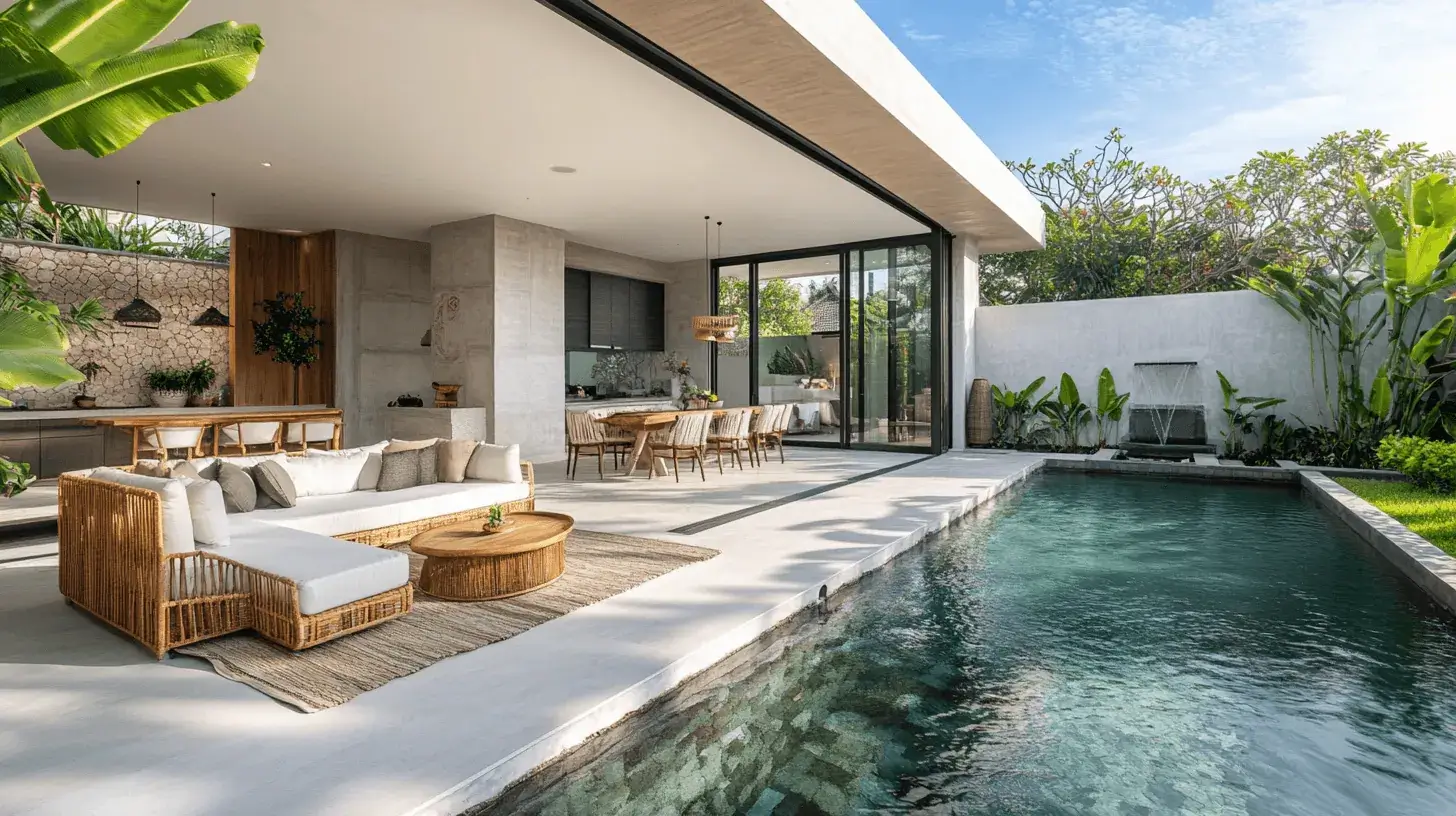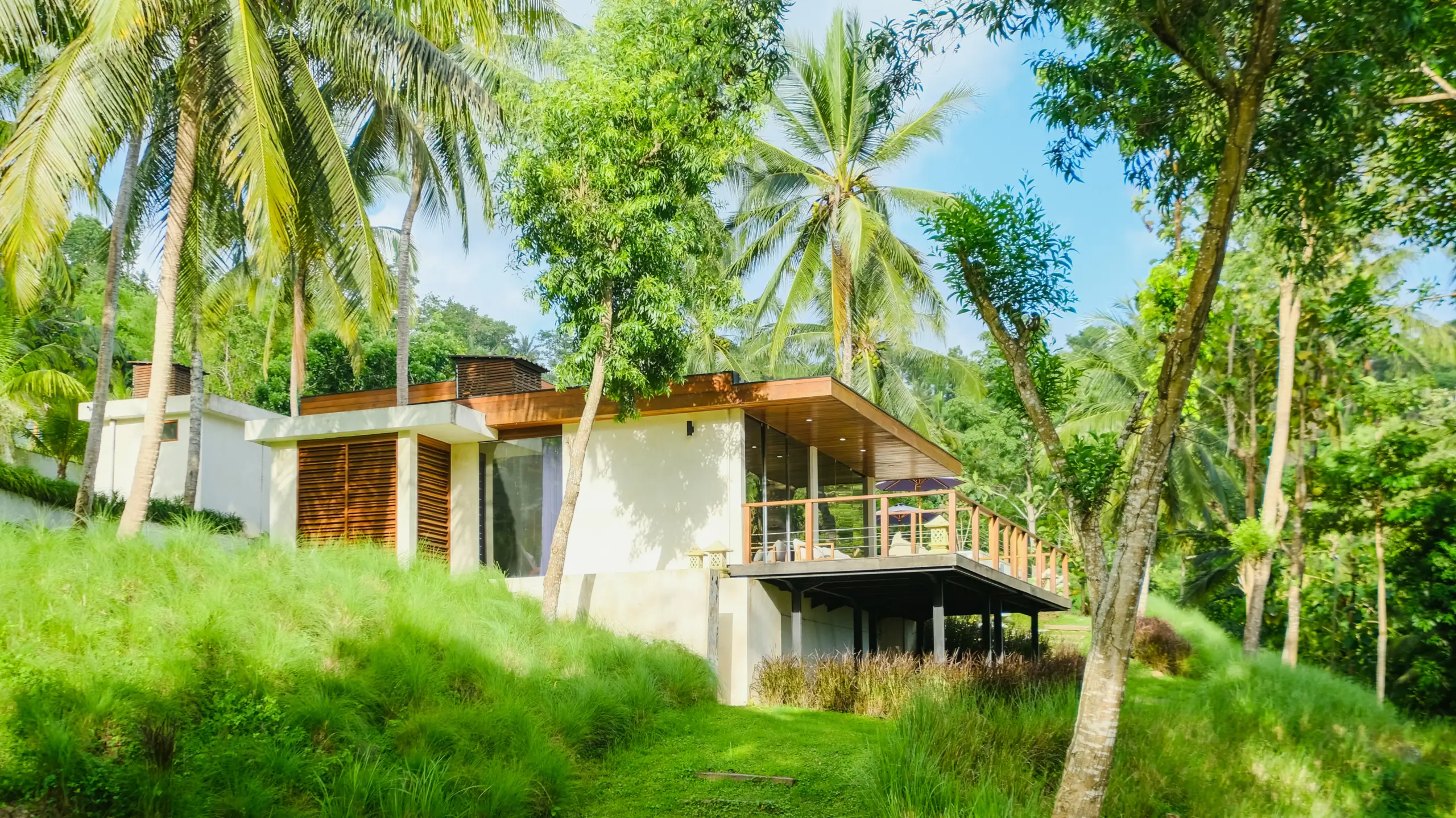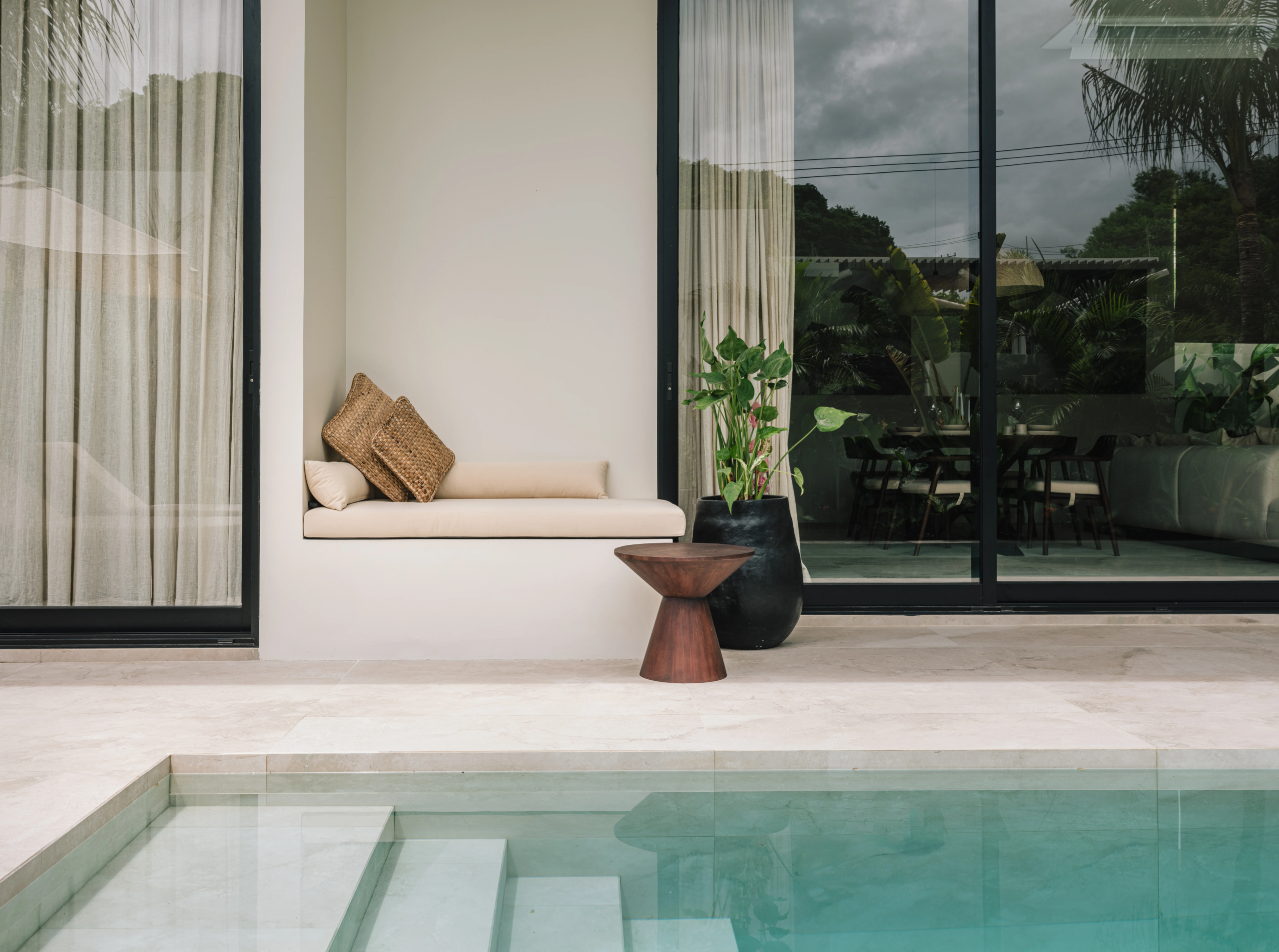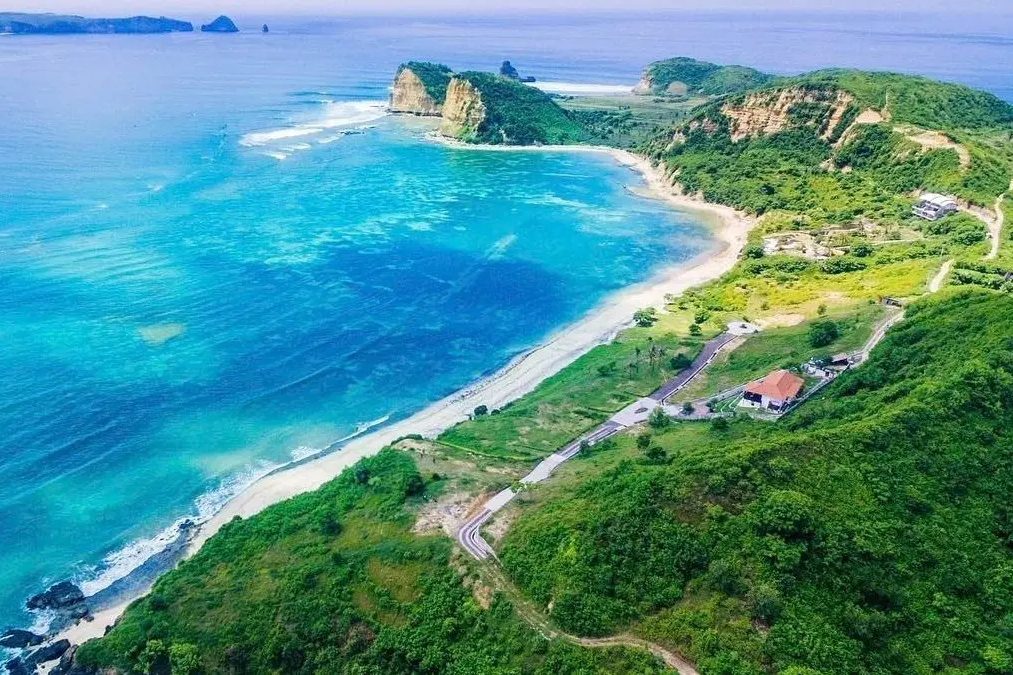Last Updated on September 12, 2024 by Nour Estates
Tourism plays a crucial role in shaping the real estate market in Lombok, an island that has steadily risen as a sought-after destination for travelers seeking natural beauty and a quieter alternative to Bali. The Impact of Tourism on Lombok Real Estate has significantly and multifacetedly affected the real estate sector, influencing everything from property prices to development trends.
Below, we explore how the booming tourism industry in Lombok is driving changes in the real estate market and what this means for investors, developers, and the local community.
Table of Contents
1. Increased Demand for Accommodation and Hospitality Properties

The influx of tourists to Lombok has led to a surge in demand for accommodation, particularly in key areas known for their scenic beauty and proximity to attractions. This demand has spurred the development of a wide range of hospitality properties, from luxury villas to budget hotels and vacation rentals.
A. Growth in Hotel and Resort Development
As tourism in Lombok grows, so does the need for hotels and resorts catering to international and domestic visitors. The development of high-end resorts, particularly in areas like Kuta Lombok and Senggigi, reflects the rising demand for accommodations such as luxury villas.
- Impact: Developers and investors have been capitalizing on the tourism boom by building new hotels and resorts, often collaborating with international hotel chains. This has led to a sharp increase in property values in prime locations, with beachfront land becoming particularly valuable.
Example: The Mandalika Special Economic Zone (SEZ) in South Lombok is a government-backed project that includes the development of several luxury villas and resorts. It is aimed at boosting tourism in Lombok and attracting high-spending visitors.
B. Expansion of Vacation Rental Market
Platforms like Airbnb have transformed how tourists find accommodation, and Lombok has seen a rapid increase in vacation rentals, particularly villas and private homes. These properties cater to travelers seeking more privacy and flexibility than traditional hotels.
- Impact: The popularity of vacation rentals has driven demand for residential properties that can be converted into short-term rental units. Investors are increasingly purchasing villas and homes with the intention of renting them out to tourists, creating a lucrative market for short-term rental properties.
Example: In popular tourist areas like the Gili Islands, luxury villas with private pools are highly sought after by investors looking to tap into the thriving vacation rental market.
2. Rising Property Prices and Investment Opportunities
Tourism has directly impacted property prices in Lombok, particularly in areas close to major attractions and beaches. Property values have risen as more tourists flock to the island, creating opportunities for local and foreign investors.
A. Price Appreciation in Prime Locations
Areas like Kuta Lombok, Senggigi, and the Gili Islands have experienced significant property price increases due to their popularity with tourists. The rising demand for real estate in these areas, driven by both tourism in Lombok and investment interest, has led to rapid appreciation in property values.
- Impact: For investors, this means that early investments in prime locations can yield high returns as property prices continue to climb. However, it also makes it more challenging for first-time buyers and those with limited budgets to enter the market.
Example: According to Colliers International Indonesia, land prices in Kuta Lombok have nearly doubled over the past five years due to increased interest from developers and the growing tourism industry in Lombok.
B. Attraction of Foreign Investors
The tourism boom has attracted tourists and foreign investors looking to capitalize on Lombok’s growing real estate market. The island’s relatively affordable property prices compared to Bali and the promise of high returns have made it an appealing destination for international buyers.
- Impact: Foreign investment has significantly pushed up property prices, particularly in luxury villas. However, foreign investors must navigate Indonesia’s complex property laws, which restrict direct land ownership.
Example: Many foreign investors use leasehold agreements or set up local companies (PT PMA) to invest in Lombok’s real estate, often targeting luxury villas and resort developments.
3. Impact of Tourism on Lombok Real Estate in Development of New Infrastructure

Tourism in Lombok has spurred significant infrastructure development, which has fueled the real estate market further. Improved roads, airports, and other amenities make the island more accessible and attractive to tourists and investors.
A. Airport Expansion and Improved Connectivity
The expansion of Lombok International Airport and the development of new roads and ports have made it easier for tourists to reach the island, leading to increased visitor numbers. This improved connectivity has also made previously remote areas more accessible for development.
- Impact: Areas that were once difficult to reach now surge in real estate development as investors capitalize on the improved infrastructure. This has led to rising property prices in these newly accessible regions.
Example: The southern part of Lombok, particularly near Mandalika, has benefited from infrastructure improvements, increasing the development of resorts and residential properties.
B. Public and Private Investments in Tourism Infrastructure
The Indonesian government and private investors have been actively investing in tourism infrastructure to support the growing number of visitors. This includes the construction of new resorts, restaurants, and entertainment facilities, as well as improvements to public spaces.
- Impact: These investments enhance the tourism experience and increase the attractiveness of surrounding properties, leading to further real estate development and higher property values.
Example: The Mandalika project includes the development of an international racing circuit, luxury villas, and a theme park, all of which are expected to boost the local real estate market.
4. Shifts in Real Estate Development Trends
Tourism has influenced the properties being developed in Lombok, with a shift towards luxury and eco-friendly developments catering to the preferences of high-end travelers and environmentally conscious tourists.
A. Rise of Luxury and Boutique Developments
As Lombok attracts more affluent tourists, there has been a growing trend towards luxury and boutique developments. These properties often feature high-end amenities, such as private pools, spas, and ocean views, catering to the desires of discerning travelers.
- Impact: The rise of luxury developments has pushed up property prices in prime locations and created a competitive market for high-end real estate. Developers increasingly focus on creating unique, luxury experiences to attract tourists and investors.
Example: Luxury villas in Tampah Hills and Torok are designed with opulence in mind. They offer privacy, exclusivity, and stunning views, making them attractive to both tourists and high-net-worth investors.
B. Focus on Eco-Tourism and Sustainable Development
The global shift towards eco-tourism has also impacted Lombok’s real estate market. Developers increasingly incorporate sustainable practices into their projects, such as using renewable energy, minimizing environmental impact, and promoting local culture.
- Impact: Eco-friendly developments appeal to tourists and investors who are looking for properties that align with global sustainability trends. This has led to a rise in the development of eco-resorts, sustainable villas, and environmentally-conscious residential communities.
Example: Eco-resorts in Lombok, particularly in areas like Selong Belanak and Tanjung, are built with sustainability in mind. They feature solar power, rainwater harvesting, and natural building materials.
5. Social and Environmental Impacts
While tourism in Lombok has brought economic benefits, it has also raised concerns about its social and environmental impacts, affecting the real estate market.
A. Pressure on Local Communities
The rapid growth of tourism in Lombok and real estate development has put pressure on local communities, leading to displacement, rising living costs, and changes in traditional lifestyles. These social challenges can create resistance to further development and impact the sustainability of the real estate market.
- Impact: Developers must carefully consider the social implications of their projects and engage with local communities to ensure that development benefits both residents and investors.
Example: In some areas of Lombok, local residents have been displaced to make way for new resorts, leading to tensions and protests that can delay or derail development projects.
B. Environmental Degradation
The rapid pace of development in Lombok has also led to environmental challenges, such as deforestation, coastal erosion, and pollution. These issues can reduce the island’s appeal as a tourist destination and negatively impact property values in affected areas.
- Impact: Unsustainable development practices can lead to long-term environmental damage, making it crucial for developers and investors to prioritize sustainability to protect Lombok’s natural assets.
Example: Overdevelopment along Lombok’s coastlines has led to concerns about erosion and loss of natural habitats, which could deter tourists and reduce the attractiveness of beachfront properties.
6. Future Outlook: Balancing Growth and Sustainability
The future of Lombok’s real estate market is closely tied to the island’s ability to balance tourism growth with sustainability. While the industry tourism in Lombok is likely to continue driving demand for real estate, maintaining Lombok’s natural beauty and cultural heritage will be key to ensuring long-term success.
A. Continued Demand for Eco-Friendly and Luxury Properties
As global trends in tourism shift towards sustainability and luxury experiences, Lombok is well-positioned to capitalize on these demands. Developers who prioritize eco-friendly practices and high-end amenities will likely see continued market success.
- Example: Projects combining luxury with sustainability, such as eco-resorts in remote locations, are expected to attract tourists and investors looking for unique and responsible investment opportunities.
B. Government and Community Engagement
For Lombok’s real estate market to thrive, continued government support and community engagement will be essential. Policies that promote sustainable development and protect local communities will help ensure that the benefits of tourism are shared more equitably.
- Example: Government initiatives that promote responsible tourism and support local businesses can help create a more sustainable real estate market that benefits investors and residents.
Conclusion
Tourism has dramatically reshaped Lombok’s real estate market, driving up property values and spurring development in luxury villas and vacation rentals. The island’s growing appeal has increased infrastructure investment and attracted domestic and foreign investors. However, this rapid growth presents challenges, including local affordability issues and environmental concerns. Balancing continued tourism-driven growth with sustainable practices and community engagement will be key to Lombok’s long-term success in the real estate sector.
About Nour Estates
We started Nour Estates with a simple idea: to make finding your dream property in Indonesia as easy and enjoyable as a day at the beach. Our team is a mix of local folks and people from around the world who fell in love with Indonesia just like you. We’ve been in your shoes, faced the challenges of buying land here, and learned all the ins and outs. Now, we’re here to share that knowledge with you.
We are here to find you the perfect property to invest in. Contact us today, and let’s start this exciting journey together!

































